Have you ever bought a watermelon only to find out it’s bland and tasteless? You’re not alone. Picking the perfect sweet watermelon can be tricky, and nobody wants to waste their money on a fruit that’s anything but sweet and juicy. So, how can you make sure you don’t end up disappointed and frustrated after picking a watermelon?
Table of Contents
Imagine slicing a watermelon on a hot summer day, excited for a refreshing treat, only to find it pale and tasteless. You probably feel pretty disappointed, don’t you? And it’s not just a waste of money; Spent the time bringing it home and tried to cut it nicely. Do you know what the best thing is? You can easily avoid this problem by following some simple tips. Check out these suggestions to make sure your next watermelon turns out perfect!
Solution: How to Pick the Perfect Sweet Watermelon
Picking the perfect sweet watermelon doesn’t have to be a guessing game. Here’s a straightforward guide to help you choose the best one every time.
1. Check the Field Spot

The field spot, also known as the ground spot, is the area where the watermelon rests on the ground. Look for a creamy yellow or orange(orange is better) field spot. This indicates the melon ripened naturally in the sun. A white or no-field spot means it was picked too early and won’t be as sweet.
2. Inspect the Stem

Check the stem—it should be dry and yellow-brown. A green stem suggests the watermelon isn’t ripe yet and won’t be as sweet. Think of it as the watermelon’s graduation cap; a yellow-brown stem means it’s ready to party in your mouth!
3. Look for Sugar Spots and Webbing
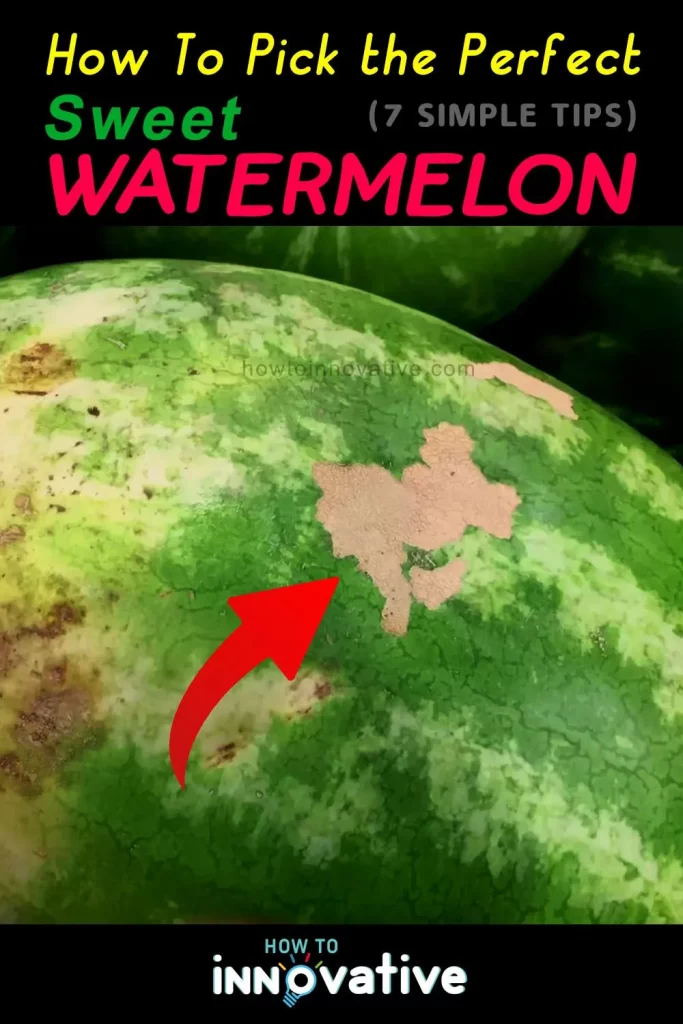
Sugar spots and webbing are the brown, rough patches on a watermelon’s surface. These marks might not look very nice, but they’re actually a good sign! They show where the sugars from the fruit have come out, which means the fruit is really sweet inside.
4. Knock on It

Yes, give it a little knock! When you tap the watermelon, it should produce a deep, hollow sound. When you hear this sound, it means the fruit is perfectly ripe and packed with water, which makes it really juicy and tasty. If it sounds dull or flat, it might not be as good.
5. Inspect the Shape and Size: Look for a Uniform Shape

Go for a uniformly shaped watermelon. Symmetry is a sign of consistent growth. Whether round or oval, the shape should be consistent. Odd lumps or irregularities might indicate that the watermelon grew unevenly, affecting its taste and sweetness. Size-wise, opt for a medium to large watermelon; these tend to be sweeter.
6. Check the Weight: Choose the Heaviest One

A good watermelon should feel heavy for its size. A heavier melon usually means it’s sweeter and has more water content. Compare watermelons of similar size and pick the heavier one.
7. Examine the Color: Look at the Stripes
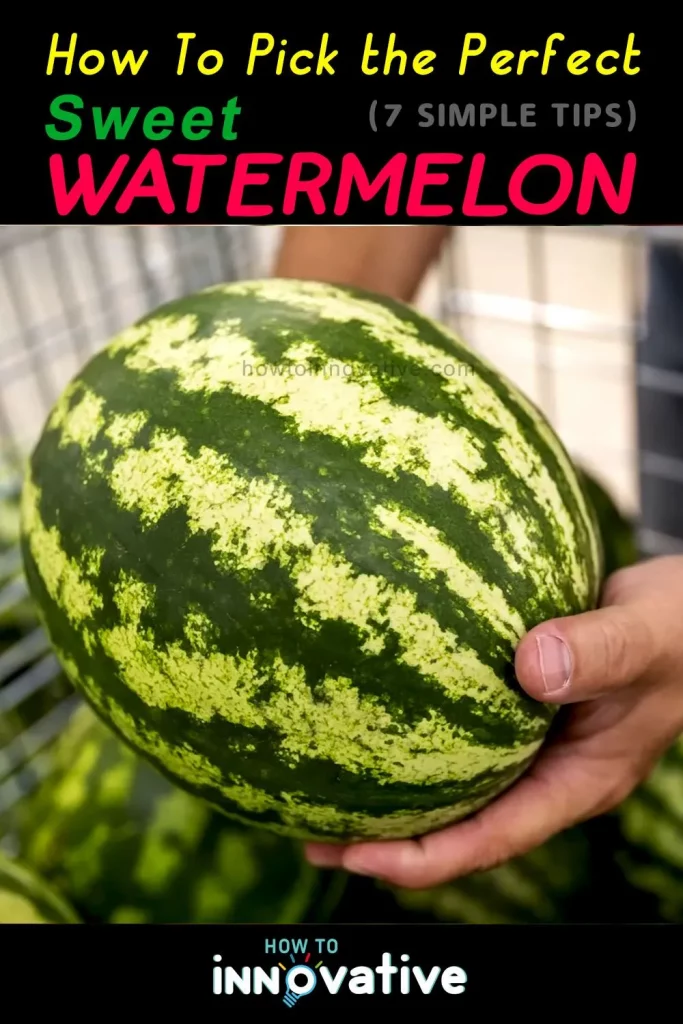
A ripe watermelon will have a dull, matte finish. Shiny watermelons are usually underripe. When you’re faced with a row of watermelons, pay attention to the stripes. A sweet watermelon should have a strong, consistent stripe pattern. The green stripes should be deep and dark green, while the pale stripes should be creamy, and light yellow.
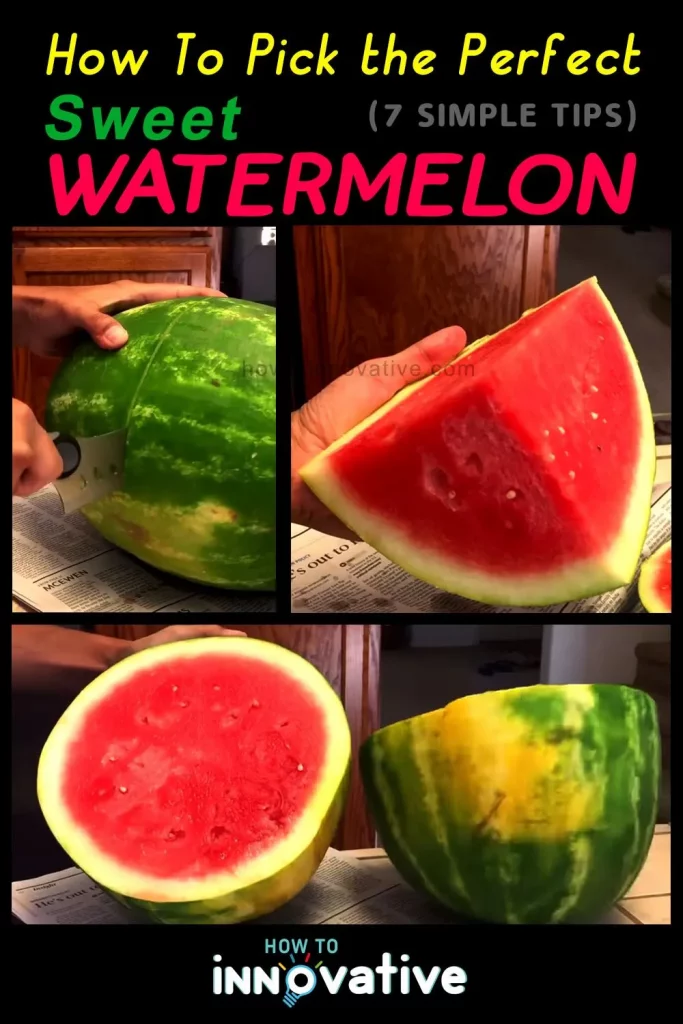
Remember these practical tips next time you’re at the store, and you’ll be the watermelon whisperer everyone envies at the summer picnic. Look for a creamy yellow(orange) field spot, sugar spots, a deep hollow sound when knocked, a heavyweight, and a dull, uniform color.

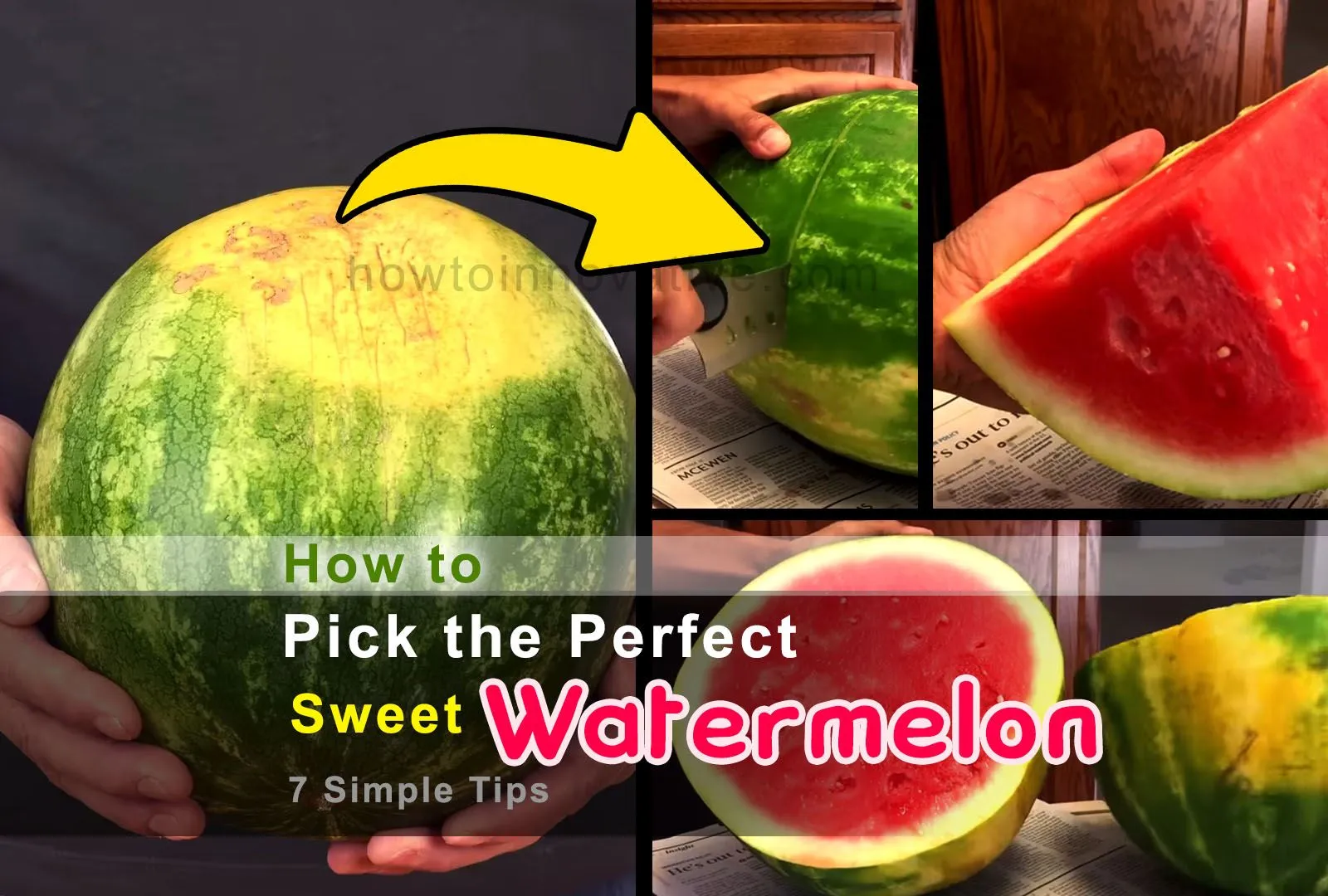


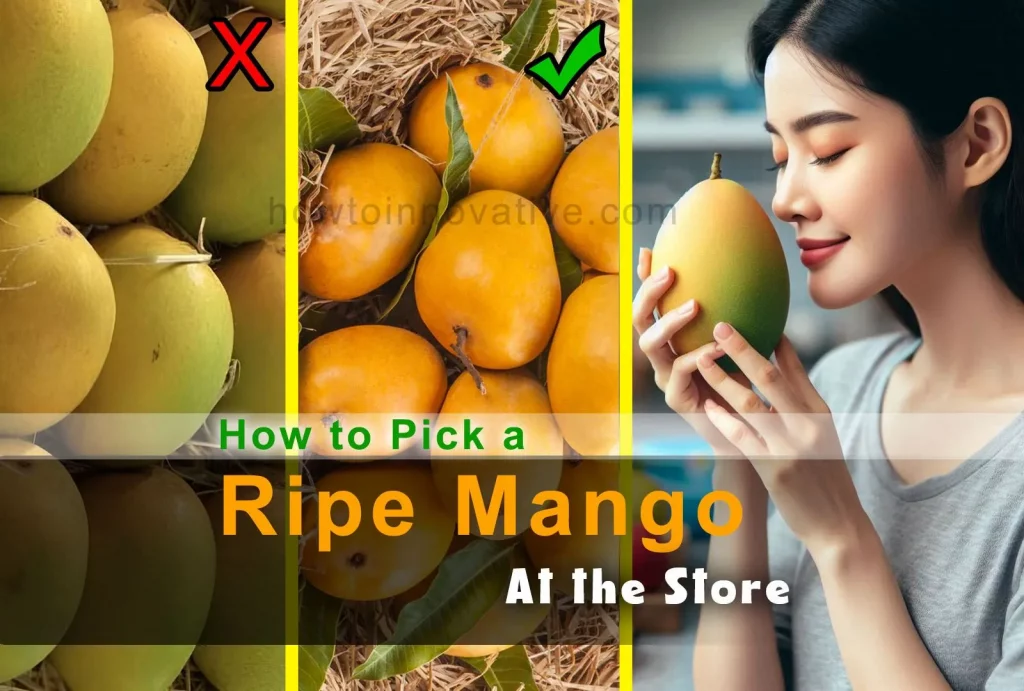
![How to Grow Potatoes in a Bucket [5-Gallon] A Step-by-Step Guide](https://howtoinnovative.com/wp-content/uploads/2024/05/How-to-Grow-Potatoes-in-a-Bucket-5-Gallon-A-Step-by-Step-Guide-1024x691.webp)